Are you asking yourself, “Does my cat have arthritis?” Let’s discuss…
How the heck do you know if your cat has arthritis?!? Well, it’s easier than you think! You just have to be a little creative when “asking” your cat!
As our cats are living longer nowadays (thanks to YOUR excellent care of them), they are more prone to getting “senior” cat diseases. But your cat doesn’t have to be a super-senior citizen to experience signs of arthritis! In my feline-only veterinary practice, we really start to pay attention to mobility issues around age 8 (though younger cats can be affected too). But just asking an owner “How is your cat’s mobility?” really isn’t enough. Most people will just say, “Fine. She can jump on the bed.” Well, cats are excellent jumpers, right? But did she jump from the floor without thinking twice…or did she jump on the foot stool first? Hmm…
First, just a few lines of technical stuff…
The term arthritis is often used interchangeably with osteoarthritis (OA) and degenerative joint disease (DJD). While there are subtle differences if you really want to get technical (see the Merck Veterinary Manual), for our purposes arthritis is a good catch-all term that we can use. Feline arthritis is a chronic degenerative disease of one or more joints usually caused by aging. When cartilage (i.e. protective tissue) is broken down the bones can rub together – ouch! It’s often really painful and it can decrease your cat’s quality of life, something none of us want. Unfortunately the pain is chronic and will not go away. And of course cats can hide almost everything, but especially pain!
Here are some subtle signs that your cat may be dealing with arthritis. Remember, see your veterinarian for an exam to discuss your kitty’s symptoms.
How well does your cat….
Run? Still doing the 9:00 zoomies at night?
Jump? Can she jump onto the kitchen counter (even if she’s not supposed to – ha!)?
Climb stairs? Does she race up and down or take her sweet time?
Chase objects? Does the laser pen (i.e. the “red bug”) still get her hunting instincts going?
If you’re not sure about the answers to these questions, break out the toys and see what she can do! Put a tasty treat on a table and see what route she takes to get there. Watch her as she jumps off the bed. Does she pounce like a kitten or think twice before leaping? You can also check out Pain Free Cats and learn more about the Feline Musculoskeletal Pain Index (FMPI), developed by my alma mater, the NC State University’s College of Veterinary Medicine, the FMPI is the “only clinically validated instrument for diagnosing and monitoring feline chronic pain arising from degenerative joint disorders.”
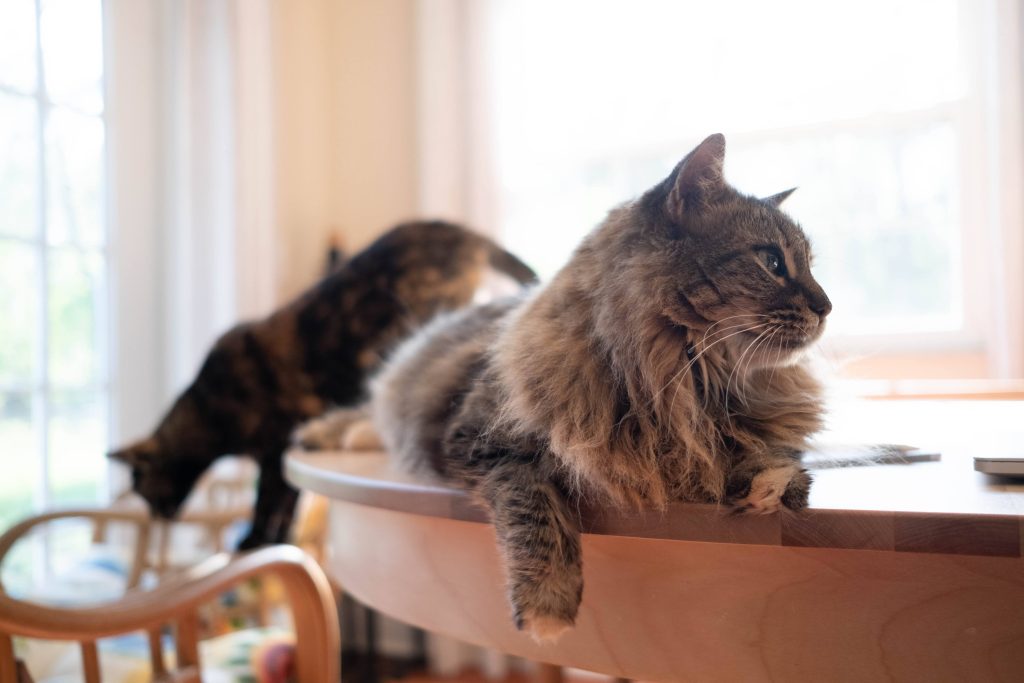
While there is no cure for arthritis, THANKFULLY it can be managed with many different treatment options nowadays! YOUR veterinarian can help you determine which methods will be best for you and your kitty!
- Solensia (frunevetmab) Injections – Y’all! This is the game changer we’ve all been waiting for! Run, don’t walk, to discuss Solensia with your feline-friendly veterinarian!
Solensia is a new FDA approved monoclonal antibody injection targeting a key source of pain called nerve growth factor. It works like your cat’s naturally made antibodies to reduce pain signals. It isn’t metabolized through the liver or kidneys so is considered safe for cats that may have early kidney disease. This is a simple injection just like a vaccine, given every 28 days at your veterinarian’s office. It may take several weeks to see effects from the injection with steady state levels achieved after 2 months, then continued long term. But you know what? That’s actually pretty quick to see real, documented effects? I actually had a client say, “Thanks for giving me my kitten back.” Wow, what a great testimony. You can read more about Solensia here.
Note – I don’t work for Zoetis nor do I get any kickbacks! Well, that’s not entirely true… my “kickback” is that I get to hear positive feedback from owners about how much better their cat’s mobility is! It’s a great feeling!
PROS: Everything I just said! You don’t have to give your cat a pill, liquid, supplement, etc! Your veterinary staff does the work for you. Remember, this injection is designed to reduce pain, but you can combine it with other supplements as listed below.
CONS: Your kitty must come to the vet every 28 days. For some cats that’s no big deal. For others it may be a deal breaker.
- Oral glucosamine/chondroitin
These are supplements (often capsules or treats) that help repair the cartilage lining the joints. These products are considered nutraceuticals, which means they are not regulated by the FDA and therefore they can be of varying quality. Because of this, you want a brand recommended by your veterinarian, otherwise who knows what you’ll be getting (again, because they are not regulated). Some of the brands we like at my cat-only veterinary hospital are Dasuquin capsules (by Nutramax) and Flexadin UC-II treats (by Vetoquinol). These are both reputable companies with a long history of making quality veterinary supplements.
PROS: If your cat likes treats then he may be a good candidate for these products. You can also mix them into canned food as long as your cat is a good eater.
CONS: Some cats are picky! Shocker, I know. Unless it’s an unhealthy treat full of artificial colors, for some cats a treat is not going to happen.

- Omega-3 Fatty Acids
These are supplements that generally contain fish oil or other marine oils. Sourcing of the oil is important for the quality of the product. These supplements help reduce inflammation naturally and also benefit the skin, brain and kidneys. Brands I like include: Antinol soft-gel caps, Welactin liquid or soft-gel caps and Nordic Naturals liquid. If you don’t mind stinky fish at home you can also try whole sardine or anchovies (2-3 per day) in water and unsalted.
PROS: Many (not all, surprisingly!) cats like fish, so they may be drawn to these fishy supplements.
CONS: Did I mention the fish? I prefer not to have stinky fish oil on my hands, but that’s me! Just keep your fingers away and use the dropper.
- Adequan injections
Adequan is the brand name for polysulfated glycosaminoglycan which is a cartilage component that inhibits harmful inflammatory enzymes in the joints, stimulates cartilage repair and increases joint lubrication. It is approved for DOGS but you can talk to your veterinarian about using it “off-label” in cats. A series of injections are administered and then tapered to the lowest effective frequency – usually every four to eight weeks.
PROS: Not having to orally medicate your cat – yay!
CONS: May require trips to the vet (talk to your vet about options).
- Anti-inflammatory medications
These are oral prescription drugs that work very well, but cats with certain medical conditions cannot take these drugs. And remember, NEVER give your cat a human anti-inflammatory such as Advil or Tylenol!
Metacam and Onsior are non-steroidal anti-inflammatory drugs (NSAIDs). Cats can be sensitive to NSAIDs but with close monitoring they may be used safely long-term and are very effective. NOTE: Metacam has a “black-box” warning on it by the FDA warning against its use in cats. Talk to your veterinarian about your options.
What about steroids? Corticosteroids are excellent anti-inflammatory medications, but long term use can actually lead to deterioration of joint cartilage. We have so many better options nowadays for arthritis than steroids. Now, many cats may take steroids for other reasons, which means that they cannot take NSAIDs at the same time.
PROS: They are very effective for inflammation.
CONS: Some cats are not good candidates (talk to your vet!).
- Other medications
There are other drugs that we use that are very safe in cats and include gabapentin (combined with other medication to increase its effectiveness), buprenorphine (an “opiod” drug that is a controlled substance) and amantadine. These are usually not the primary way we treat arthritis, but administered in addition to other medications.
Non-traditional treatments to consider when wondering “Does my cat have arthritis?”
- Therapy laser
This treatment helps relieve inflammation and pain in the joints without medication. The therapy laser works by stimulating the joint cells to heal themselves, reducing inflammation, and stimulating endorphins (“feel good” hormones). This treatment is very comforting and relaxing to cats. It takes from 5 to 15 minutes depending on the number of joints treated. Ask your veterinarian if they offer laser therapy!
- Acupuncture
This is an alternative treatment that is effective and well-tolerated by most cats. Treatments take about 30 minutes. Look for a veterinarian who has been well trained in acupuncture. The Chi Institute is one of the most well-known training facilities.
- Chinese herbal therapy
This is also an option for chronic pain. It can come in the form of a capsule, tea pill or liquid. Consult a veterinarian who is knowledgeable in this modality.
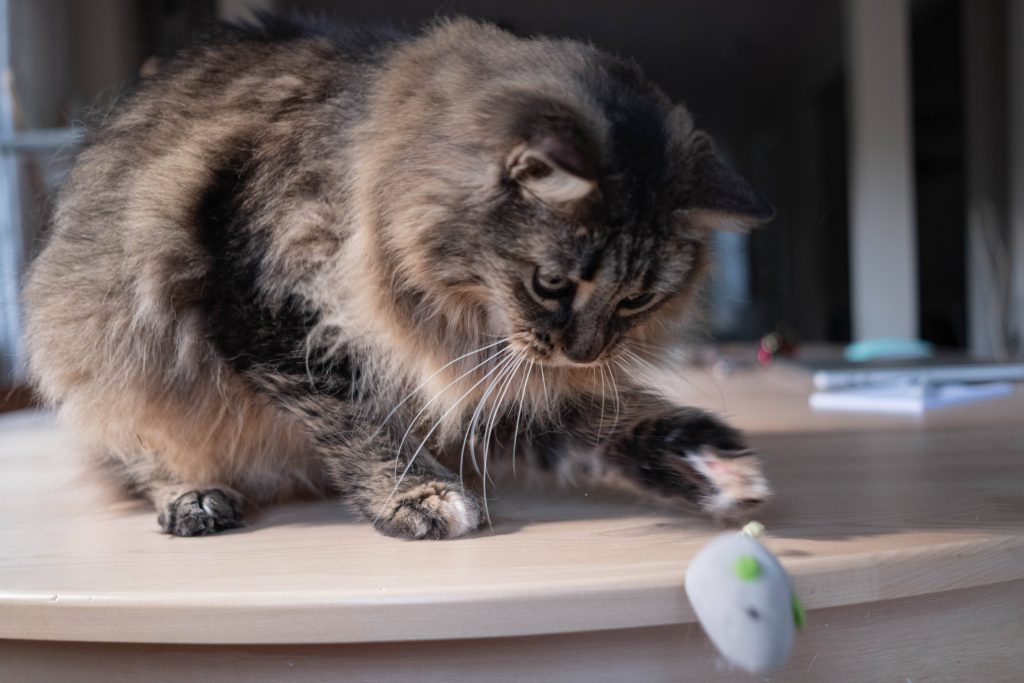
What else can you do?
In addition to supplements and medications, there are other treatments that can benefit your cat and improve his/her quality of life:
- Weight loss! Yep, that’s #1. It’s no different than in people. Excess weight leads to stress on the joints. If your cat is on a weight loss plan but not losing weight, then something needs to change. Talk to your vet!
- Place ramps and/or stools near favorite elevated resting spots like the foot of your bed or the window sill.
- Purchase a litter box with shallow sides or cut an entry-way cut out of one end of a deep litter box. Having other litter box issues? Check out these tips for some helpful info!
- Some cats benefit from heated beds but they must be used with caution! Be very careful with electric heating pads designed for humans – they can burn even if they are on low!
- Keep your cat’s nails trimmed. Older cats often groom and use scratching posts less often so their nails can get long, thick and even ingrown. This makes walking even more painful!
*FTC Disclosure: This post contains affiliate links. If you make a purchase after clicking on the links, I will get a small commission at no additional cost to you. I only recommend products that I believe in! I am an affiliate for both Amazon and other online retailers. As an Amazon Associate I earn from qualifying purchases.
Treating arthritis in your kitty is likely to involve a combination of the treatments outlined above in addition to the other lifestyle changes. Let’s do everything we can to allow our cats to live their best, and most comfortable, life!
Remember, the above info does not constitute medical advice, just my opinion. Consult your veterinarian to discuss these treatments in detail.
Does your cat have arthritis? What do you do to help her?
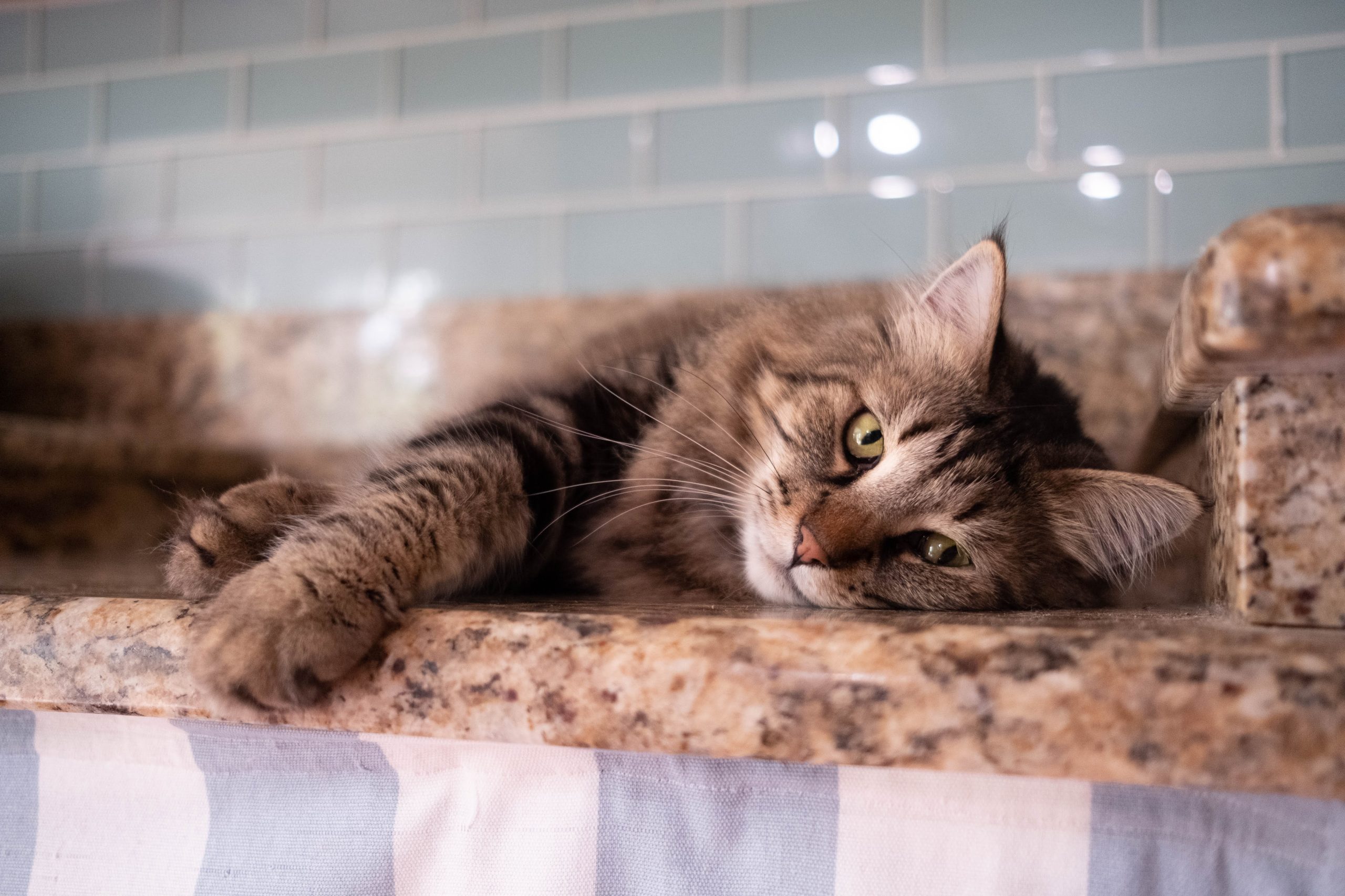


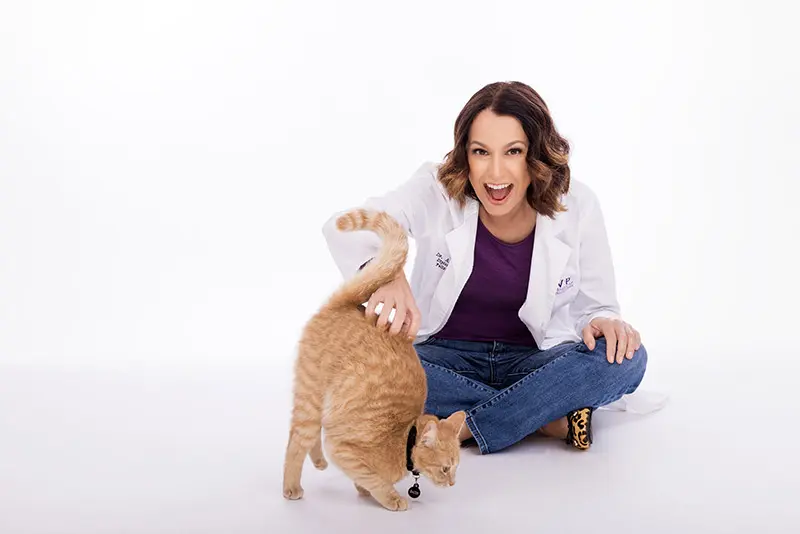











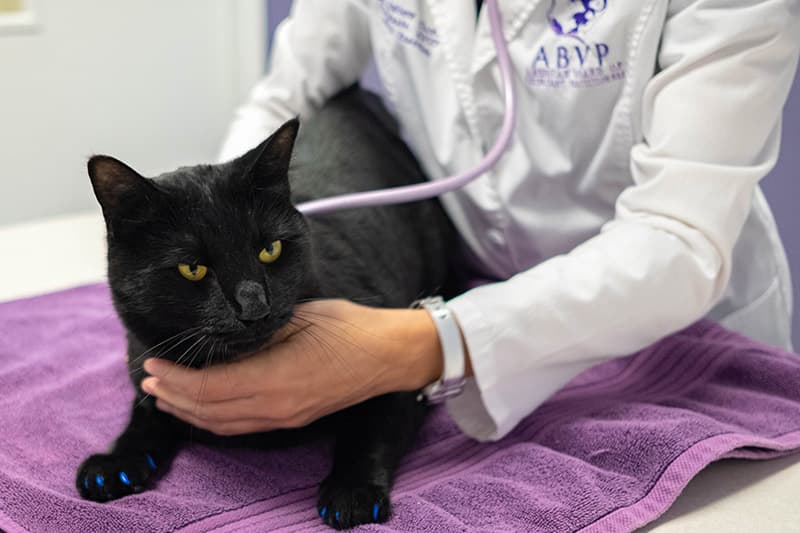
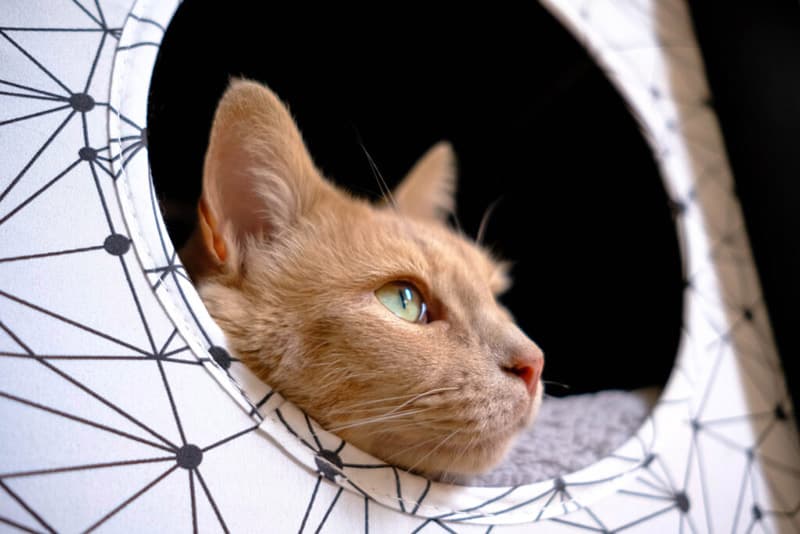

2 Responses
Hi Dr Amber! This is Niki-( used to work together) ! This blog is fantastic!
I was reading on the arthritis post, love Solensia! At my practice we use all the options you listed, i am wondering if you know about Cartrophen. Its an injectable like adequan, can only get it thru Arthropharm in Canada
We use it just like adequan, in conjunction with- makes a difference – cartophen.com
Looking forward to your posts!
Hey Niki! Glad you like the blog. We love Solensia too and have seen so much success. I don’t think I’ve heard of cartrophen but now I’m going to look it up and also ask my collegue Dr. Jaeger who’s working on a pain fellowship. Interesting name choice because at first I thought you said carprofen 😺